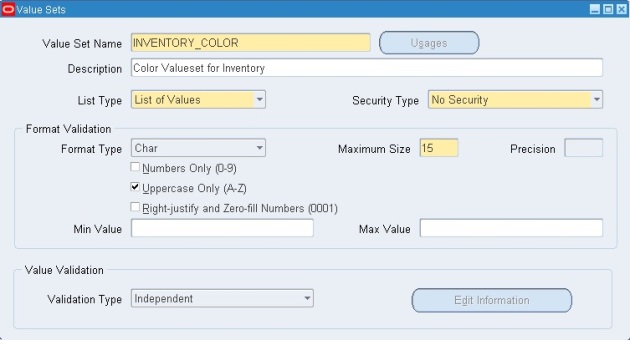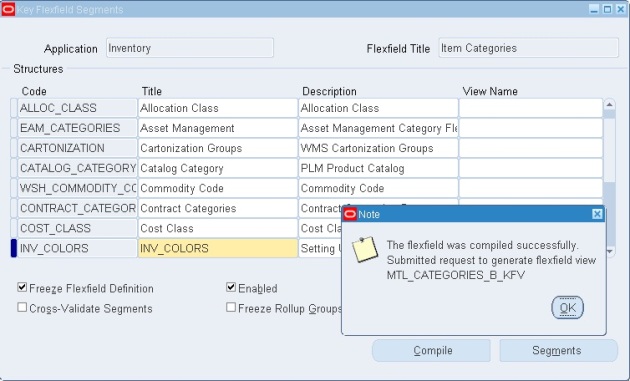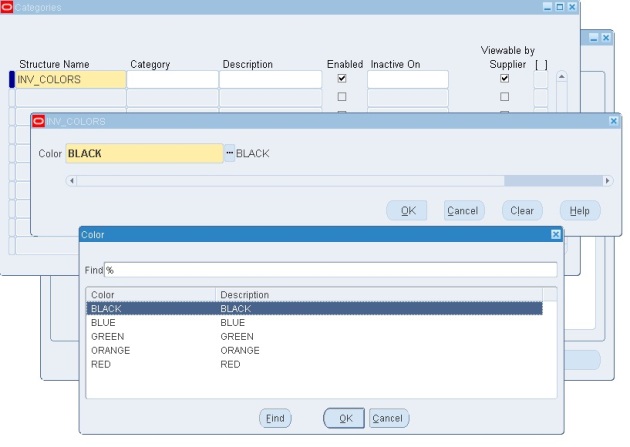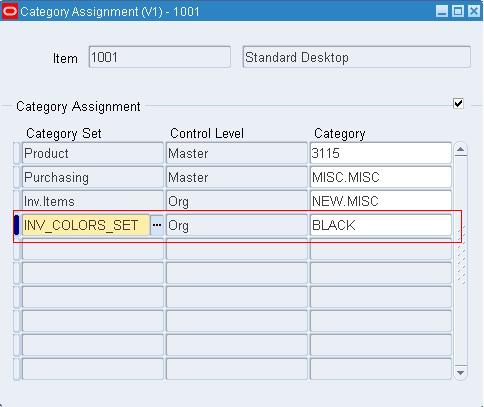Partitioning is a divide-and-conquer approach to improving Oracle maintenance and SQL performance. As the number of rows in table increases, the performance impacts will increase and Backup and recovery process may take longer time than usual and sql queries that affecting entire table will take much longer time. We can reduce the performance issue causing by large tables through separating the rows of a single table into multiple parts. Dividing a table’s data in this manner is called partitioning the table. The table that is partitioned is called a partitioned table, and the parts are called partitions.
Important note here is that SQL queries and DML statements do not need to be modified in order to access partitioned tables. After partitions are defined, DDL statements can access and manipulate individual partitions rather than entire tables or indexes. This is how partitioning can simplify the manageability of large database objects. Also, partitioning is entirely transparent to applications.
Each partition of a table or index must have the same logical attributes, such as column names, datatypes, and constraints. But each partition can have separate physical attributes such as pctfree, pctused, and tablespaces.
Advantages of using Partition’s in Table
- The performance of queries against the tables may improve because Oracle may have to search only one partition (one part of the table) instead of the entire table to resolve a query.
- The table may be easier to manage. Because the partitioned table’s data is stored in multiple parts, it may be easier to load and delete data in the partitions than in the large table.
- Backup and recovery operations may perform better. Because the partitions are smaller than the partitioned table, you may have more options for backing up and recovering the partitions than you would have for a single large table.
Types of Partitioning Methods
1] RANGE Partitioning
The most basic type of partitioning for a table is called range partitioning. Range partitioning divides a table into partitions based on a range of values. You can use one or more columns to define the range specification for the partitions. Oracle automatically uses the upper bound of the next lower VALUES LESS THAN value as the lower bound of a partition.
Example:
CREATE TABLE sales_range
(salesman_id NUMBER(5),
salesman_name VARCHAR2(30),
sales_amount NUMBER(10),
sales_date DATE)
PARTITION BY RANGE(sales_date)
(
PARTITION sales_jan2000 VALUES LESS THAN(TO_DATE('02/01/2000','DD/MM/YYYY')),
PARTITION sales_feb2000 VALUES LESS THAN(TO_DATE('03/01/2000','DD/MM/YYYY')),
PARTITION sales_mar2000 VALUES LESS THAN(TO_DATE('04/01/2000','DD/MM/YYYY')),
PARTITION sales_apr2000 VALUES LESS THAN(TO_DATE('05/01/2000','DD/MM/YYYY'))
);
2] HASH Partitioning
Under this type of partitioning, the records in a table are partitioned based of a Hash value found in the value of the column that is used for partitioning. “Hash Partitioning” does not have any logical meaning to the partitions as do the range partitioning.
To create a hash partition, use the PARTITION BY HASH clause in place of PARTITION BY RANGE.
Example:
CREATE TABLE sales_hash
(salesman_id NUMBER(5),
salesman_name VARCHAR2(30),
sales_amount NUMBER(10),
week_no NUMBER(2))
PARTITION BY HASH(salesman_id)
PARTITIONS 4;
Use hash partitioning if your data does not easily lend itself to range partitioning, but you would like to partition for performance and manageability reasons.
3] List Partitioning
List partitioning enables you to explicitly control how rows map to partitions by specifying a list of discrete values for the partitioning key in the description for each partition. The advantage of list partitioning is that you can group and organize unordered and unrelated sets of data in a natural way. For a table with a region_state column as the partitioning key, the sales_west partition might contain values like ‘California’, ‘Hawaii’ etc.
Example:
CREATE TABLE sales_list
(salesman_id NUMBER(5),
salesman_name VARCHAR2(30),
sales_state VARCHAR2(20),
sales_amount NUMBER(10),
sales_date DATE)
PARTITION BY LIST(sales_state)
(
PARTITION sales_west VALUES('California', 'Hawaii'),
PARTITION sales_east VALUES ('New York', 'Virginia', 'Florida'),
PARTITION sales_central VALUES('Texas', 'Illinois'),
PARTITION sales_other VALUES(DEFAULT)
);
Creating Subpartitions
You can create subpartitions—that is, partitions of partitions. You can use subpartitions to combine all types of partitions: range partitions, list partitions, and hash partitions. For example, you can use hash partitions in combination with range partitions, creating hash partitions of the range partitions. For very large tables, this composite partitioning may be an effective way of separating the data into manageable and tunable divisions.
Indexing a partitioned table:
When you index a table, you can partition the index just as you partition the table itself. This works because indexes are separate database objects. Partitioning the index generates the same benefits as a partitioned table–improved performance, reduced maintenance time, and increased availability. Many applications use a concept called equipartitioning to increase the total value of partitioned tables and indexes. With equipartitioning, you have the same partitions for an index as you have for its table–the same number, partitioning columns, and partition bounds. A partitioned table can have both partitioned and non-partitioned indexes on it.
Modify characteristics of partitions:
| Add a partition |
ALTER TABLE ADD PARTITION partition_name VALUES LESS THAN value storage_parameters |
| Move a partition |
ALTER TABLE MOVE PARTITION tablespace |
| Rename a partition |
ALTER TABLE RENAME PARTITION original_partition_name TO new_partition_name |
| Modify a partition |
ALTER TABLE MODIFY PARTITION |
| Drop a partition |
ALTER TABLE DROP PARTITION partition_name |
| Truncate a partition |
ALTER TABLE TRUNCATE PARTITION partition_name |
The use of partition-extended table names has the following restrictions:
- A partition-extended table name cannot refer to a remote schema object.
- The partition-extended table name syntax is not supported by PL/SQL.
- A partition extension must be specified with a base table. No synonyms, views, or any other schema objects are allowed.















 This is the era of social networking and we are the people who live by it. It all started when I was in my engineering. First Orkut made a strong foundation in India amongst the youth. I still remember those days when we were so addicted to Orkut for making new friends, getting number of scraps, changing profile name and pictures the most unusual and interesting way and also changing the themes as well. Orkut was a huge success in India at that time. As time passed, we heard about twitter ,facebook, myspace and some other similar social forums. To be honest, I loved orkut so much that I never bothered about these other social forums at that time. One fine day, one of my friend asked-‘Hey do you know twitter? I simply replied ‘Ya I have heard about it, but have not explored yet…what’s interesting about it? ’…He said-‘You can follow anyone there and get updates of their life’…’Is it?’…..’Yes…even you can follow Sachin Tendulkar and Amitabh Bachchan’…He said. I got some interest at that time and explored the 140 character world. But the interest just finished in few months. ’Why do I need the updates of other people’s life?’….I mean if they did something worth knowing then we can get that piece of information easily in newspaper and other mediums. Then came the facebook era. Initially I found hard to understand the facebook. But slowly I analyzed that it comes up with so many few features that eventually drag me from orkut. The same might happen to many of my friends. Unlike the other social networks facebook’s growth was solid and it keeps the platform changing frequently so as to give the people something new and keeping them busy with them so that they will not feel bored and think of going outside facebook. Today facebook has set many new standards to social networking and now facebook’s standards have become as the current definitions of social networking.
This is the era of social networking and we are the people who live by it. It all started when I was in my engineering. First Orkut made a strong foundation in India amongst the youth. I still remember those days when we were so addicted to Orkut for making new friends, getting number of scraps, changing profile name and pictures the most unusual and interesting way and also changing the themes as well. Orkut was a huge success in India at that time. As time passed, we heard about twitter ,facebook, myspace and some other similar social forums. To be honest, I loved orkut so much that I never bothered about these other social forums at that time. One fine day, one of my friend asked-‘Hey do you know twitter? I simply replied ‘Ya I have heard about it, but have not explored yet…what’s interesting about it? ’…He said-‘You can follow anyone there and get updates of their life’…’Is it?’…..’Yes…even you can follow Sachin Tendulkar and Amitabh Bachchan’…He said. I got some interest at that time and explored the 140 character world. But the interest just finished in few months. ’Why do I need the updates of other people’s life?’….I mean if they did something worth knowing then we can get that piece of information easily in newspaper and other mediums. Then came the facebook era. Initially I found hard to understand the facebook. But slowly I analyzed that it comes up with so many few features that eventually drag me from orkut. The same might happen to many of my friends. Unlike the other social networks facebook’s growth was solid and it keeps the platform changing frequently so as to give the people something new and keeping them busy with them so that they will not feel bored and think of going outside facebook. Today facebook has set many new standards to social networking and now facebook’s standards have become as the current definitions of social networking. social networking platform Google plus has been released as an “Invite only” release and this is a popular marketing technique nowadays to intensify the users’ urge to join while doing the beta testing with a limited number of users. Now I am using G+ and I think it can give a very good competition to facebook, but will need serious innovations to virtually be a facebook killer.
social networking platform Google plus has been released as an “Invite only” release and this is a popular marketing technique nowadays to intensify the users’ urge to join while doing the beta testing with a limited number of users. Now I am using G+ and I think it can give a very good competition to facebook, but will need serious innovations to virtually be a facebook killer. Google Circles are groups of friends you organize by topic: Friends, Family, College Buddies, Roommates, etc. From your Circles page you drag and drop your contacts into each of these groups, which make it easier to share what you want with them.
Google Circles are groups of friends you organize by topic: Friends, Family, College Buddies, Roommates, etc. From your Circles page you drag and drop your contacts into each of these groups, which make it easier to share what you want with them. Sparks is like Google Reader, except it brings content to you automatically based on your interests. Each topic (ex tech, photography, whatever) will get its own “Spark” page and provide links to related articles, videos, photos, etc
Sparks is like Google Reader, except it brings content to you automatically based on your interests. Each topic (ex tech, photography, whatever) will get its own “Spark” page and provide links to related articles, videos, photos, etc















